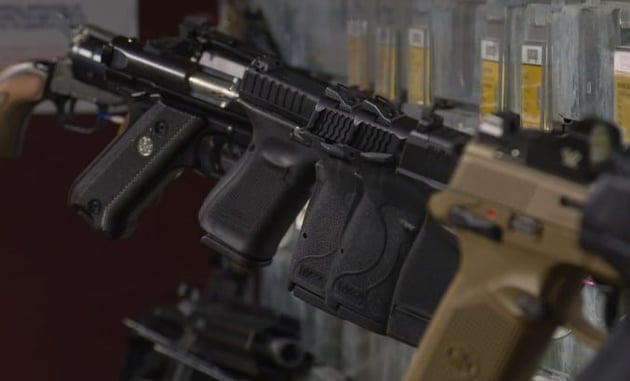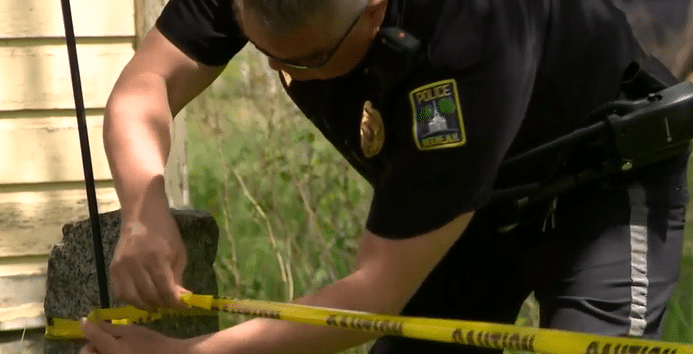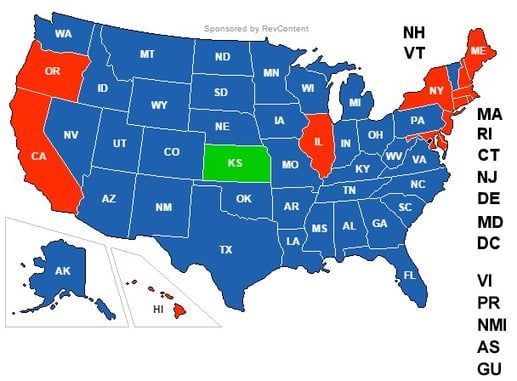Weapons routinely get confiscated by law enforcement. After a self-defense scenario has taken place, police may often ask to take your firearms until a judge makes a ruling or the regional prosecutor decides not to press charges.
This guide will predominantly cover what happens when the Bureau of Alcohol, Tobacco and Firearms (BATF, ATF) confiscates your weapons under civil forfeiture.
Q: Wait, what is civil forfeiture?
A: It’s when your property (firearm) is confiscated by law enforcement but will not be used against you for criminal proceedings.
“A civil forfeiture action is effected through either a summary, administrative, or judicial procedure.” (FBI, Asset Forfeiture)
Administrative: “An administrative forfeiture procedure can be commenced by a seizing agency against most property if it is valued at $500,000 or less…”
Judicial: If you filed a claim after an administrative forfeiture, the seizing agency must receive and transmit that to the District, State, or U.S. Attorney as applicable to the case.
Step 1: Get An Inventory Of What Was Taken
You can have your weapons confiscated by the BATF or the Federal Bureau of Investigation (FBI) in one of two ways:
- Search Warrant
- Consent or Warrantless Search
In both cases, immediately request either a Return or certified inventory of the weapons taken – serial numbers, brand, model, number of magazines, ammunition – every supporting detail that can be used to identify your firearms. If the weapons are not being used against you (and thus defined as “criminal forfeiture”) in a case or your case was dismissed, you were ruled “not guilty” or similar, you are entitled to pursue them through applicable law.
When your assets (firearms) are seized by a civil forfeiture proceeding, you have the ability to make a claim on those assets. But it’s important that you do so in a timely fashion!
Your seizing agency should issue you a letter stating by what authority they have seized your weapons. And by that authority, you have a course to make your claim.
For instance, when the BATF sends a letter following the seizure of a person’s firearms, they commonly fall into two categories:
1. Title 18 Chapter 44, U.S.C. Section 9 24(d)
This covers the government’s authority to seize your weapon – generally a non-automatic firearm – if it was involved in any way in the violation of a whole host of regulations being broken. Even if you – yourself – were not involved in any way, shape, or form, they can try to legally confiscate your weapon based upon this section of law.
NOTE: Civil forfeiture is against your property – not you. So the claim will be against your property. That means law enforcement can claim your weapon under civil forfeiture even if you, yourself, have no direct link to a firearm-related violation.
2. Title 26 Chapter 53 § 5872 – Forfeitures
This particular piece of law goes after machineguns and destructive devices specifically. So, if it was an automatic weapon, it would probably fall under this statute when it was civilly forfeited. It covers both the justification to seize and dispose. More specifically, it won’t be sold at the civil forfeiture gun auctions that so many places are fond of holding to raise money.
Because the grand majority of concealed carry firearms are not classified under this law, we’re going to focus on the law that is – Title 18.
NOTE: It’s always advisable to contact an attorney when dealing with civil forfeiture. While Federal laws change slowly, state and municipal laws are known to add complications.
Step 2: Concealed Carry Civil Forfeiture Claims Process
In the case of the BATF, within 60 days of the civil forfeiture they will usually send a letter by Certified Mail with both the applicable statutes used in seizing the property, a general description of the property obtained, and the claims process.
When they cite Title 18 Chapter 44, U.S.C. Section 9 24(d), for instance, there are over 40 possible laws that could have been broken. The BATF (or other agency) needs to cite specifically which violations were alleged and most importantly – show definitive proof. If they cannot do this, they have no rightful claim to your concealed carry firearm.
In that letter, you will generally be given three basic options:
- Contest
- Consent
- Take No Action
If you decide to “Take No Action”, usually nothing further is required. Your property is now forfeited.
If you consent, you may submit a Petition for Remission or Mitigation of Forfeiture which makes you eligible to receive some amount of money towards the value of the forfeited assets.
If you want to contest the forfeiture, you must respond within 35 days of receipt of the letter. The form to contest the seizure is usually included with the Certified Mail letter but if it isn’t, you can petition the seizing agency for this form.
Send the returned form by Certified Mail so you have receipt of both its departure and arrival. Once it is received, legally the seizing agency must process it and inform the applicable government attorney. In many cases, citizens are able to get the return of their firearms through this process.
Step 3: Follow The Instructions & Get Your Conceal Carry Firearm Back!
After the seizing agency has received your contest and your property taken out of civil forfeiture, they will send you back instructions for how to pick it up.
Just remember, people get their weapons seized for a whole host of reasons. And it’s only an insurmountable task if you fail to respond within an adequate time and with the proper forms. There’s no reason to lose your firearm after you’ve legally defended yourself in a life-or-death situation.
Step 4: (Alternate Ending) You Missed The Boat – Go To Auction
Most states and counties have an auction on a semi-regular basis where they get rid of all of the seized weapons they’ve obtained. If your weapon is one of them, your best chance of getting it back is through the auction process. The good news is that many of these weapons go for fractions of their cost and you may end up taking home more firearms than you lost.
NOTE: If your concealed carry weapon was classified as an automatic weapon, it is not liable to be sold at auction. There’s a whole different process for that category.
Have you or someone you known had firearms seized through civil forfeiture? Tell us your experience in the comments section below.














